SEO
What Are Backlinks in SEO? Everything You Need to Know
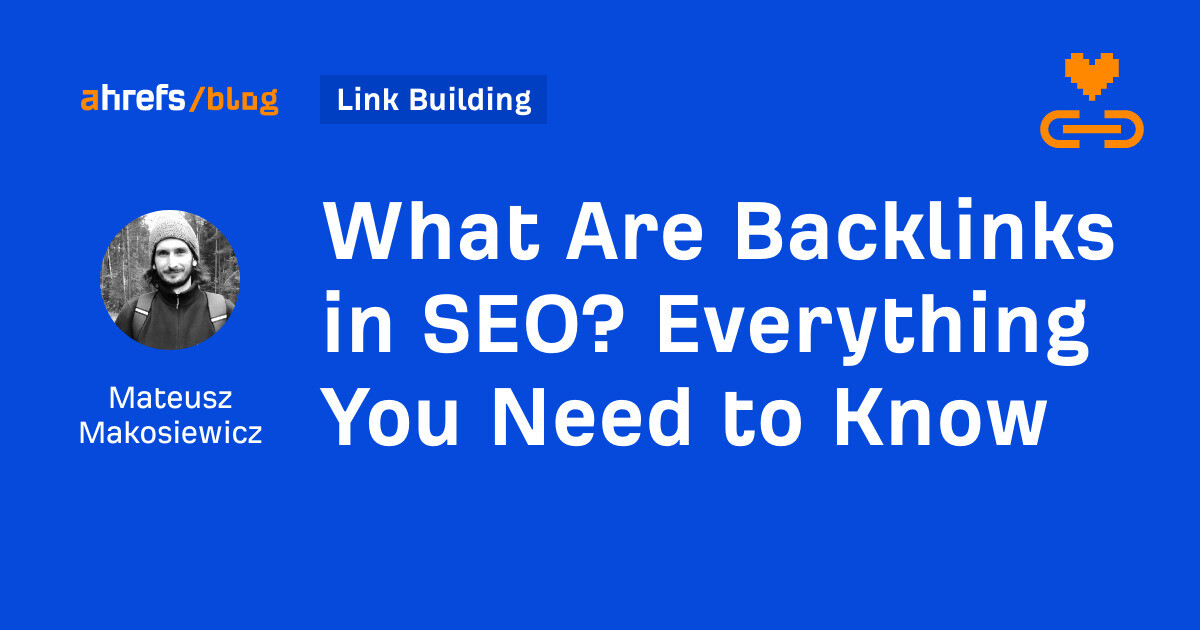
Backlinks (aka inbound links, incoming links) are links from a page on one website to another. Search engines like Google use backlinks as votes of confidence in ranking pages.

Backlinks are important for SEO because of two main reasons:
- Rankings – Generally speaking, the more backlinks your webpages have, the more likely they are to rank for relevant search queries (we confirmed this in a study).
- Discoverability – Search engines revisit popular pages more often than unpopular ones. And they may discover your content faster if you get backlinks from popular pages.
There are two ways to check a website or webpage’s backlinks.
The first method only works for sites that you own. Use the second one to check backlinks to another website or webpage.
Checking backlinks to your website
A basic tool for checking backlinks to your website is the free Google Search Console.
Once signed in, click “Links” on the sidebar. The number below “External links” shows the total number of unique backlinks to the website.

Google Search Console shows limited data in the app (top 1,000 links) and won’t show you some useful SEO metrics you could use to analyze your backlinks. To get more data for free, you can use Ahrefs Webmaster Tools.
Once you set up a project, click on Backlinks in the dashboard.

This will take you to the Backlinks report in the Site Explorer tool. This report will show all your backlinks and relevant backlink data.

Checking backlinks to another website
You can start with a tool like Ahrefs’ free backlink checker.
Just enter a domain or URL, and hit “Check backlinks.”

You’ll see the total number of backlinks and referring domains (links from unique websites), plus the top 100 backlinks.

To see a full list of backlinks to any page or website, use Ahrefs’ Site Explorer.
Not all backlinks are created equal. Here are some of the many attributes that contribute to a backlink’s quality and utility. You can use them to analyze your backlinks and link building opportunities:
- Authority
- Relevance
- Anchor text
- Follow vs. nofollow
- Placement
- Destination

Let’s look at them in more detail.
Authority
Backlinks from strong webpages usually transfer more “authority” than weak ones.
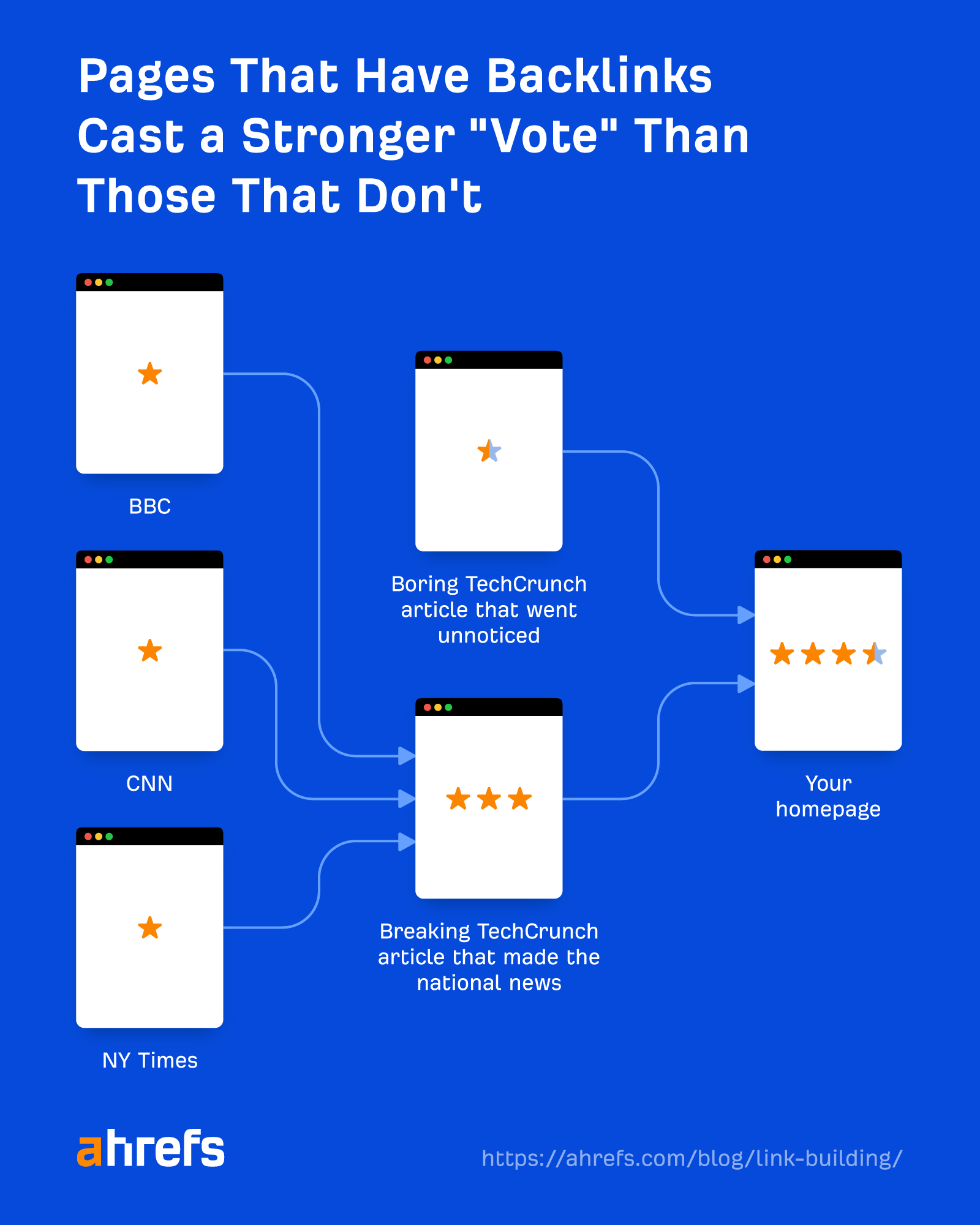
We’ve studied page-level authority a few times, and we’ve found a clear relationship between it and organic traffic.

Sidenote.
URL Rating (UR) is Ahrefs’ page-level authority metric. It’s scored on a scale from 0 to 100.
That said, backlinks from strong pages don’t always transfer more authority.
The more links there are on the page that links to you, the less authority will be transferred to you because it’s shared between all of those pages (due to the PageRank algorithm).
You can gauge a backlink’s authority by using the UR metric in the Backlinks report in Ahrefs’ Site Explorer. (You can also find it in other Ahrefs tools where relevant.) The higher the UR, the better.

Relevance
Links from websites on the same topic as yours are deemed to bring more value. Google states this in its “How Search Works” guide:
If other prominent websites on the subject link to the page, that’s a good sign that the information is of high quality.
Say a plumber has backlinks from two pages: one about cats, and one about installing boilers. Relevance in this context means that chances are the latter link is most valuable.
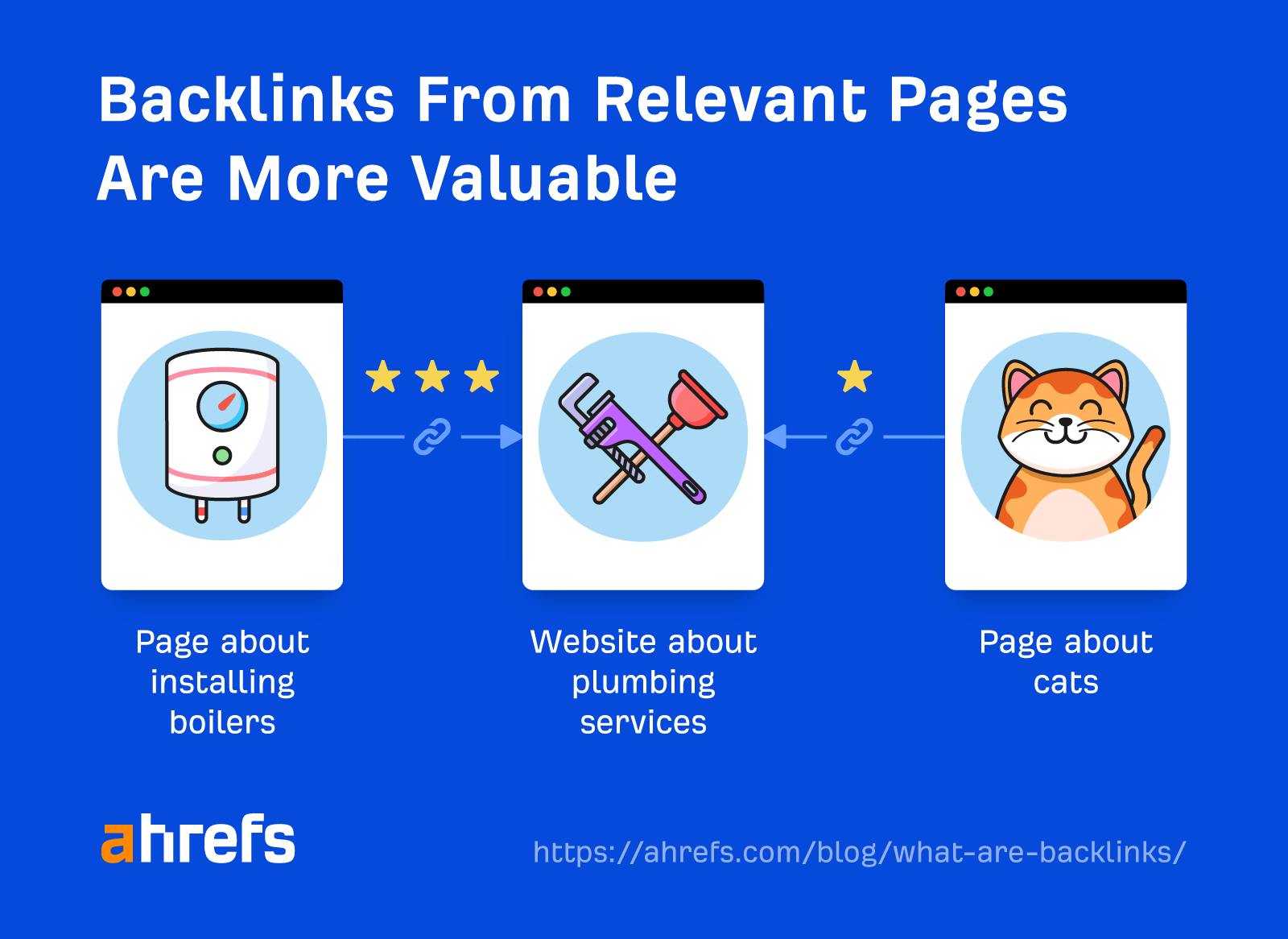
Anchor text
Anchor text refers to the clickable words that form a backlink.

Google says that anchor text influences rankings in its original patent.
Google employs a number of techniques to improve search quality, including page rank, anchor text, and proximity information.
You can see the anchor text of any backlink in Site Explorer’s Backlinks report.

You can also filter for certain words in the anchor text.
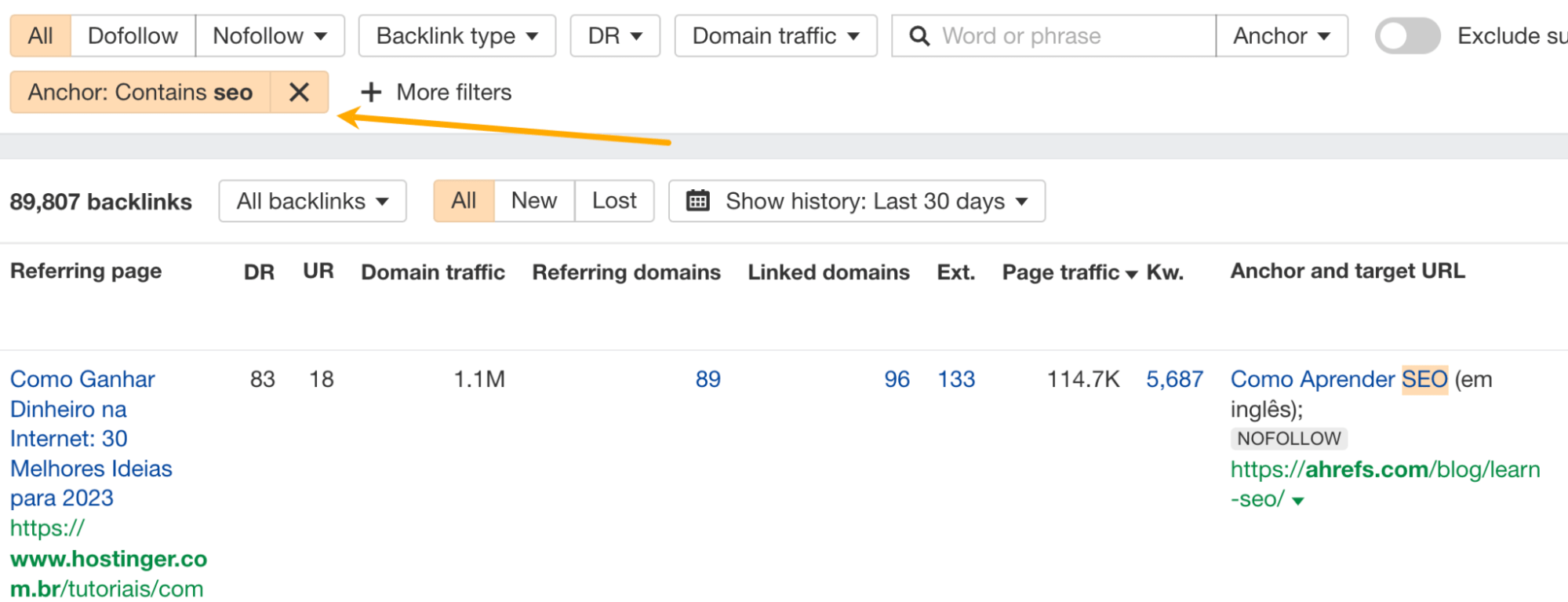
Follow vs. nofollow
Nofollow is a link attribute that instructs Google not to follow the link and serves as a hint not to pass authority (as of 2019).

A followed link is a link that doesn’t have that attribute nor the “sponsored” or “UGC” attributes.
Because nofollow links usually don’t influence rankings, it’s best to prioritize getting followed links.
However, since “nofollow” is only a hint now, pursuing a nofollow link from a relevant high-authority page may still be a good idea.
You can find these types of backlinks using filters in Site Explorer’s Backlinks report.

Placement
Because people are more likely to click prominently placed links, some links on webpages likely pass more authority than others.

Bill Slawski talks about this in his analysis of Google’s updated “reasonable surfer” patent:
If a link is in the main content area of a page, uses a font and color that might make it stand out, and uses text that may make it something likely that someone might click upon it, then it could pass along a fair amount of PageRank. On the other hand, if it combines features that make it less likely to be clicked upon, such as being in the footer of a page, in the same color text as the rest of the text on that page, and the same font type, and uses anchor text that doesn’t interest people, it may not pass along a lot of PageRank.
Consider this when pursuing links. If your link will likely end up in the site’s footer or along with 50 other sites in the sidebar, then put your energy into other opportunities.
Something that can help you find backlinks placed in content (as opposed to less prominently placed links) is the “Backlink type” filter in Site Explorer’s Backlinks report.

Destination
Because Google ranks pages and not entire websites, it’s best to build links pointing directly to the page that you want to rank.
However, getting links to some page types is harder. For example, getting links to commercial pages is often difficult because people prefer linking to informative content.
To address this, you can use internal links to pass authority from pages that get a lot of links to your important but “boring” pages.

Generally, there are four ways to get more backlinks to your site:
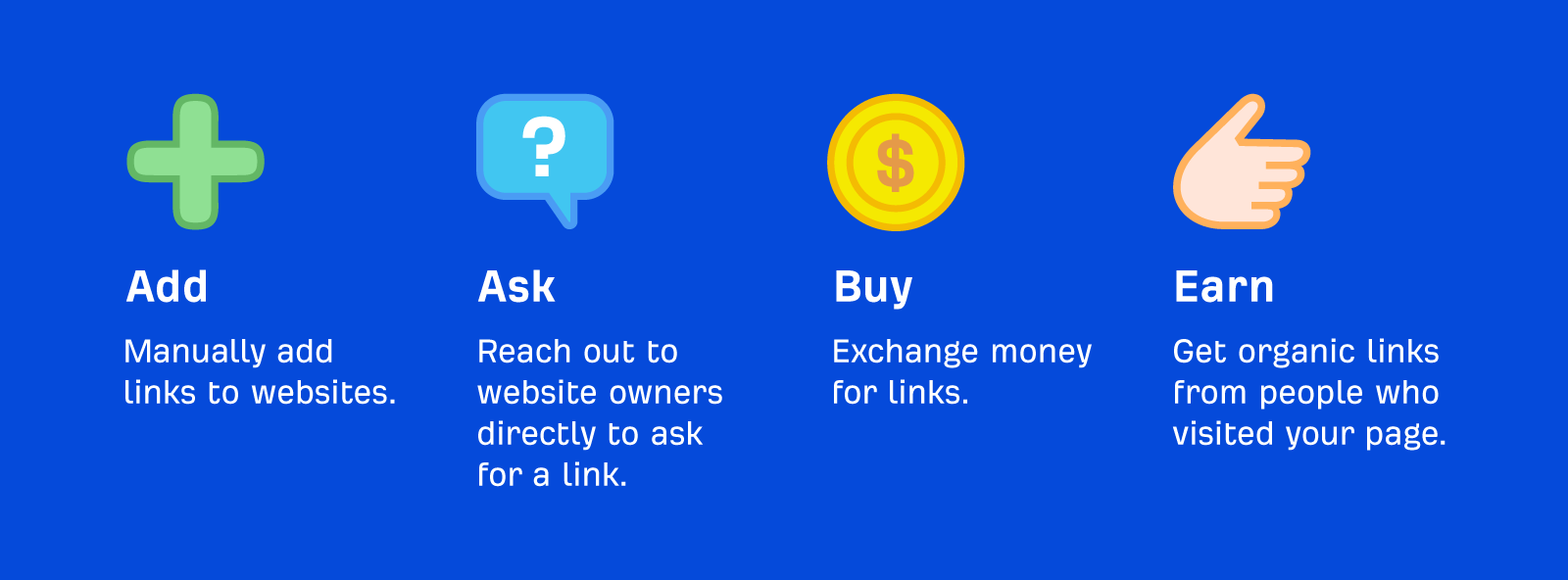
Adding backlinks
Some websites allow you to add a link either by manually submitting it or requesting to submit it. It’s easy to get a link this way, but it’s not always worth it. They can be low in value in the eyes of Google or even deemed spammy if you overdo it.
One of the most common (and legit) tactics here is to add your website to relevant local directories. They can help you rank for queries with local intent and get your business discovered by customers too.
Asking for backlinks
This is when you reach out to other site owners, editors, or webmasters and ask them to link to your page. For this to work, you need to have a clear value proposition. That’s where link building tactics come in.
Here are a few tried and tested ones:
- Guest blogging – Offer to write a one-off post for another website.
- Broken link building – Find relevant dead links on other sites, then reach out and suggest your working link as the replacement. (You can use our broken link checker to do this.)
- The Skyscraper Technique – Find relevant content with lots of links, make something better, then ask those linking to the original to link to you instead.
- Unlinked mentions – Find unlinked mentions of your brand, then ask the author to make the mention clickable.
Learn more about these tactics and others in the video and posts below.
Buying backlinks
Every now and then, you’ll come across an offer to buy links—don’t take it.
Buying backlinks is extremely risky. Google is strongly against that, and you can get your site penalized.
This is not to be confused with paid link building services. Good link building agencies use legit, white-hat tactics that have nothing to do with spam or buying links for that matter.
Earning backlinks
This is when people discover your content via search engines like Google, social media, or word of mouth and choose to link to your page. In other words, earned backlinks are organic.
You can improve your chances of earning more backlinks by creating truly useful content that people should want to link to.
You should definitely promote your content too. The more people you reach, the more links you can get.
Basically, when pursuing backlinks, avoid anything that looks low-quality, spammy, or like an obvious link scheme (links in exchange for something).
Bad links will be a waste of time. In the best-case scenario, they won’t have any impact on your rankings. At worst, they may make your pages rank lower on Google or even not appear at all.

Here are some types of bad links you should definitely avoid:
- PBNs – Multiple sites linking together in order to manipulate search engines.
- Paid links – Exchanging money, goods, or services in return for links for ranking purposes.
- Link exchanges – Linking to a site in exchange for that site also linking to yours.
- Automated links – Use of automated software or services to generate large volumes of links to a site.
- Forum and comment spam links – Adding spam links in forums as part of signatures.
Final thoughts
Backlinks are crucial for ranking on Google, especially for competitive queries. But the easier it is to get a link, the less valuable it’ll be.
Looking to get started with link building? Read our beginner-friendly guide or watch our link building tutorials on YouTube.
Got questions? Let me know on Twitter or Mastodon.


















